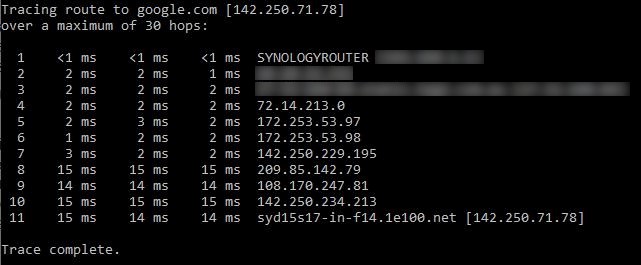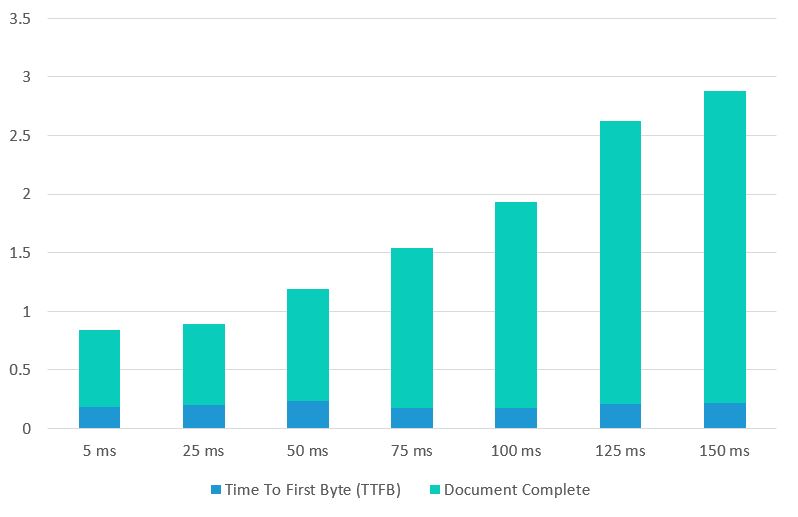

Slow Website? Your network could be the culprit
30 Aug 2021, by Slade Baylis
Don’t you just loathe losing a bidding war on an eBay auction because the page wouldn’t reload fast enough. Or how about waiting to purchase tickets to a hot new show that’s just become available, only to find your desperate clicking was in vain. Moments like these can make you want to yell profanities at your computer, rip the internet out, or smash your keyboard – or maybe that’s just me. What is true however is that it can lead to people becoming frustrated and choosing not only to abandon a purchase, but also choosing to never ever come back.
In a study from FastHosts in the UK1, half of those surveyed stated that a slow web page was the key reason for abandoning an online purchase. Not only that, but a similar number of people (45%) stated that they would refuse to revisit a website following a bad experience. Additionally, research from Portent2 showed that for each additional second of load time on a website up to five seconds, the conversion rates on eCommerce websites dropped by an average of 4.42%. And for each additional second after that, it continued to drop by 2.11%.
With this information, it’s easy to see why keeping a website fast is a key goal for many businesses, especially those who do a lot of business online. When looking to speed up a website there is one area that is often overlooked - the quality of the network of your hosting provider! Yes, the network you belong to can dramatically impact your website speed, and by association, your bottom line.
Network Latency - the forgotten culprit in website performance
When looking to optimise your website, there are few common places that people look to get a few extra milliseconds of speed. This can include: optimising images so that they don’t take as long to download; implementing caching so that the website doesn’t need to fetch a product list every time a visitor comes to the website; and it could also be looking to add additional CPU or RAM to the hosting environment to give their site more horsepower. Within that discussion though, often the question of networking never gets raised. Networking is behind the scenes and its impact is often invisible to website owners. Networking affects website speed through what’s known as latency.
The term “latency” generally refers to the amount of time it takes from the point at which a request is made from a user to a service, to when that service can respond and that response then gets back to the user. You can think of it as the digital equivalent to the amount of time it takes for you to send a letter, for the recipient to receive it and then for you to get a response. One of the primary causes of network latency is distance, mainly due to physical limitations on speed when sending data around the world. For example, for an Australian visitor to connect to an Australian-based server, it usually takes between 5–30 milliseconds (ms). With connections overseas though (to somewhere like the United States), an Australian visitor could see latency of up to 250–300 ms.
With that explanation, it becomes fairly clear why the delay in communication between a website visitor and a website’s server can contribute to the website’s overall load-time. When a visitor goes to a website, a lot of requests are made to the server. Whether it’s several images used on the website, a specific font that needs to be downloaded, or some CSS code that handles how your website will display - each file that the visitor needs will end up being a separate request to the server. If their connection to the server is taking longer, each one of those requests also takes longer.
This usually shows up in two different ways. The first is that the Time To First Byte (TTFB) is longer, which is the amount of time it takes between your device sending a request and an initial response being received by you. The next way this can be seen is the time each individual request takes to complete. Increased latency may only increase the load time by a small fraction for each request, but when added together, they can ultimately extend the load time on a website by seconds.
To give a concrete example, the graph below shows the results of speed tests against a website where the only difference was latency.
As you can see, as the latency of the connection to the server increases, the actual full page load time increases linearly to the point of adding several seconds overall. This is why it’s critical to address latency as part of your website speed optimisation.
Peering – reduce connections to reduce latency
Knowing that latency is something that needs to be addressed is one thing, but knowing how to actually address it is another. In some instances, if your audience is global rather than primarily Australian, the answer might be a Content Delivery Network (CDN). We’ll address CDN solutions in a future article. However, for most Australian businesses, with audiences that are also Australian, a different approach is needed. One thing that can be done, is choosing a provider who “peers” with a large number of other networks around the world. To understand why, we’ll explain how connections are made over the internet.
As an example, without going into too much technical lingo, I’ll explain how this works when you want to visit a website. First you open up an internet browser (like Chrome or Firefox) and type in the website address into the search. What happens then is that your computer will send a request off to your Domain Name System (DNS) servers asking them to find out what server is hosting that website. A DNS server can be thought of as the equivalent of the White Pages for the internet. When your computer is given a website address, it needs to find out which server the website is located on and a DNS server is what achieves that. Your DNS server (often run by your internet service provider) retrieves the unique identifier known as an IP address for that server. Once your computer has the IP address, it now knows exactly where it needs to connect to.
Next, your computer will need to find the server itself, connect to it, and send a request for that website. The way that this happens, is again that your computer connects to your router and asks it to connect you to the IP address that it has located. Your router then “routes” you through (hence the name) to another router that your Internet Service Provider (ISP) owns and operates. From there, usually there is a long series of different routers connecting to each other to get you closer to the website’s server that you are trying to connect to. Sometimes there are quite a few connections required to connect you from point A to point B, also known as “hops”. Each of these hops take time to handle the request and pass you along, all of which add up and can slow down the load time for the website that you are trying to reach by a small amount each time.
Example of number of “hops” to connect to google.com

So the question is - how does “peering” help solve this issue? To answer that we’re going to use our own network as an example of how it can be done correctly.
Micron21 operates Australia’s second largest peered network. What that means is that we’ve taken steps to connect our network directly with many other key networks around the world. What this results in, is connections to or from our network going via the “shortest path" possible. This limits the amount of roundtrips involved when connecting to servers. So what does this mean for you? Well, if someone wants to visit a website that is hosted with us, then their device is only a few steps away from our network. This reduces the amount of hops required to connect and thus the website will load much faster than if it wasn’t.
Most other hosting providers don’t do this and just connect to one network (or possibly a few) thus only attaining a minimal level of redundancy on their network.
Peering – the added benefit of greater network reliability
There is another huge benefit to choosing a provider that is peered with a lot of other networks - it is the reliability that comes with it. As mentioned above, a lot of other providers choose to take the easier way out and only peer with one or a couple of larger up-stream providers. They totally rely on them for their peering as they don’t have to face the added expenses of setting up those relationships with other network providers and getting connected. The problem with doing that is that it limits the paths one has to just those providers.
To help set the scene and demonstrate why this is an issue, we’ll lay out a hypothetical situation. Say that there was a hosting provider, we’ll call them Hosting Provider “A”. This hosting provider A chooses to disregard those risks and only peers with a single other provider. For this example, let’s say it’s Telstra. Because Telstra operates their own large network and is peered with a lot of other networks around the world, generally the connection to Hosting Provider A’s network should be reliable and fast. Most of the time, things would operate normally and no-one would even notice any issues. However, a problem is introduced if that upstream provider has any sort of network issues internally that stops traffic from being able to get to your network. If Telstra was to have such an issue, all of a sudden any sort of request for a website hosted with that provider would fail as there was only one way to get into their network. With this example you can see why having more peers limits the risk of all paths into your network being down, meaning there always a way for visitors to connect to your services.
As you can see from the example above, only peering with a single provider (or even a handful of providers) is not enough. Not only can it slow down websites, but it can also leave you more vulnerable to downtime due to network issues that you have little to no control over.
Where to begin when optimising your website?
When you are trying to speed up a website, there are definitely a few key areas that you should look at first. This includes optimising images, combining and compressing CSS and JavaScript, or implementing some form of caching. Those improvements are common knowledge and are usually the first thing that web developers look into when trying to speed up a website. However, it is important to keep your provider’s network in mind as another critical area that can help improve speed.
It could be that last hurdle you need to jump to get your website speed from being merely acceptable, to it now being quick, snappy and responsive.
Considering Micron21?
If you would like to bring your services over to Micron21 so that you can benefit from our world-class networking, remembering we are the 2nd largest peered network in the whole of Australia, please email us at sales@micron21.com or give us a call on 1300 769 972 (Option #1).
Sources:
1 Fasthosts Internet Limited, Need for speed: Slow loading websites cost retailers nearly £60bn in lost sales each year 2021, <https://www.fasthosts.co.uk/blog/need-for-speed-slow-loading-websites-cost-retailers-nearly-60bn-in-lost-sales-each-year/>
2 Portent, Site Speed is (Still) Impacting Your Conversion Rate 2019, <https://www.portent.com/blog/analytics/research-site-speed-hurting-everyones-revenue.htm>

